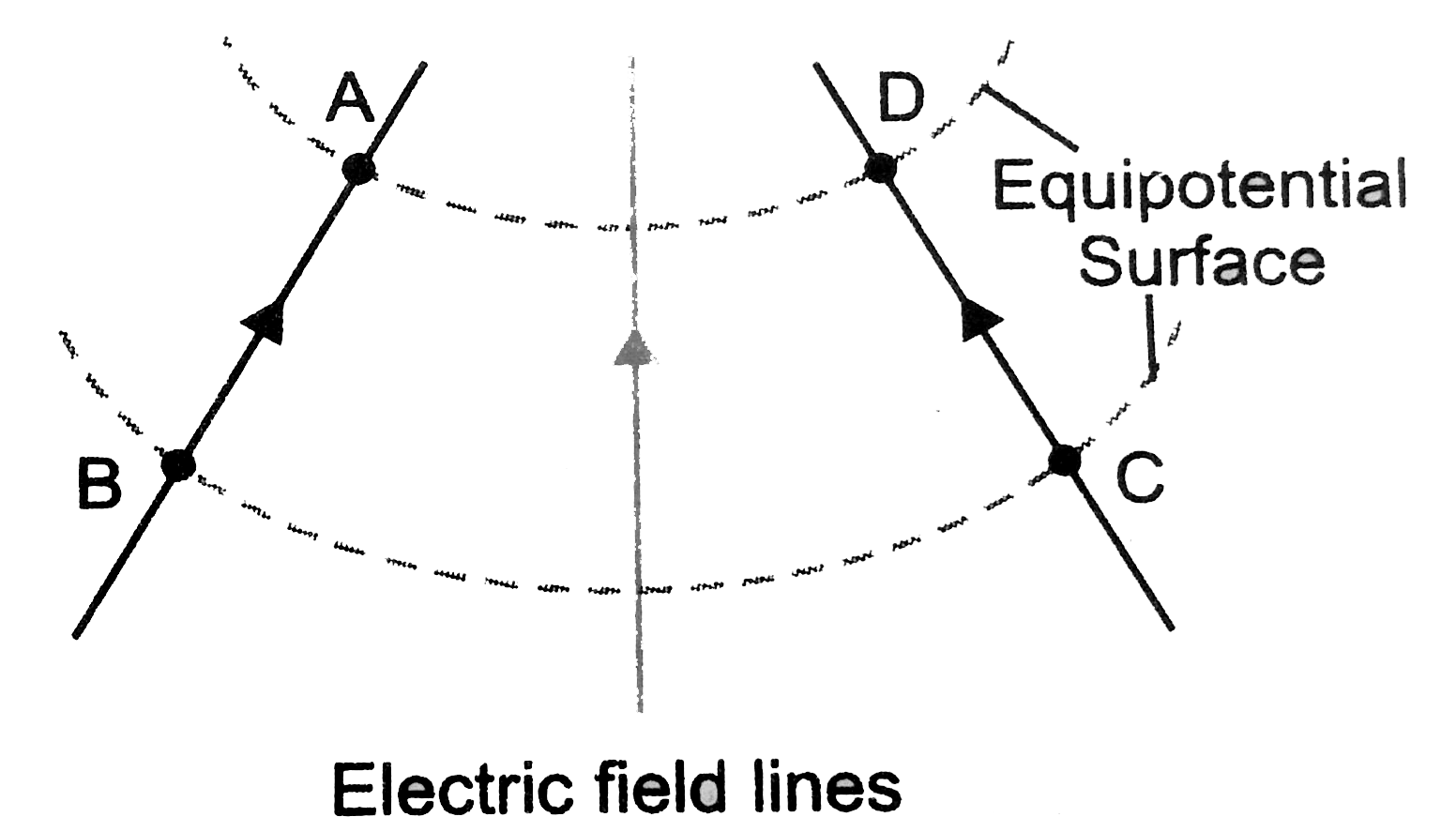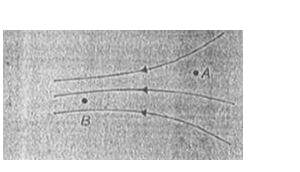In moving from A to B along an electric field line, the work done by the electric field on an electron is 6.4×10−19J. If ϕ1andϕ2 are equipotential surfaces, then the potential difference VC−VA is.
 .
.
−4V
4V
Zero
64V
The correct Answer is:B
Work done by the field W=q(−dV)=−e(VA−VB)
=e(VB−VA)=e(VC−VA) (∵VB=VC)
⇒(VC−VA)=We=6.4×10−191.6×10−19=4V
Topper's Solved these Questions
- BOOK - A2ZCHAPTER - ELECTRIC POTENTIAL & CAPACITANCEEXERCISE - Capacitor32videos
ELECTRIC POTENTIAL & CAPACITANCE
- BOOK - A2ZCHAPTER - ELECTRIC POTENTIAL & CAPACITANCEEXERCISE - Capacitor With Dielectric32videos
ELECTRIC POTENTIAL & CAPACITANCE
- BOOK - A2ZCHAPTER - ELECTRIC POTENTIAL & CAPACITANCEEXERCISE - Electric Potential Energy22videos
ELECTRIC POTENTIAL & CAPACITANCE
- BOOK - A2ZCHAPTER - ELECTRIC CHARGE, FIELD & FLUXEXERCISE - Section D - Chapter End Test29videos
ELECTRIC CHARGE, FIELD & FLUX
- BOOK - A2ZCHAPTER - ELECTROMAGNETIC INDUCTIONEXERCISE - Section D - Chapter End Test30videos
ELECTROMAGNETIC INDUCTION
Similar Questions
When an electron moves from A to B along and electric field line as shown in Fig. the electric field does 3.94×10−19J of work on it. What are the electric potential differences
(VB−VA),(VC−VA),(VC−VB) ?
 View Solution
View SolutionCalculate the work done by electric field in moving an electron from point A(0, 2 cm) to point B(5cm, 9cm) in a region of electric field →E=104ˆjVm−1
View Solution
Knowledge Check
- Question 1 - Select One
If a particle moves on an equipotential surface of an external field, work done by the electric field on the charge is
APositiveBNegativeCZeroDDepends upon the direction of field - Question 2 - Select One
A and B are two points in an electric field . If the work done in carrying 4.0C of electric charge from A to B is 16.0J, the potential difference between A and B is
AzeroB2.0VC4.0VD16.0V - Question 3 - Select One
The equation of an equipotential line in an electric field is y=2x, then electric field strength vectro at 1,2 may be .
A4ˆI+3ˆjB4ˆI+8ˆjC8ˆI+4ˆI+4ˆjD−8ˆI+4ˆj
In figure two points A and B are located in a region of electric field . The potential difference VB−VA is
 View Solution
View Solution15 joule of work has to be done against an existing electric field to take a charge of 0.01 C from A to B. Then the potential difference (VB−VA) is :-
View SolutionWhen a 2μC charge is carried from point A to point B, the amount of work done by the electric field is 50μJ. What is the potential difference and which point is at a higher potential ?
View SolutionThe work done in carrying an electron from point A to a point B in an electric is 10 MJ. The potential difference (VB−VA) is then
View SolutionThe work done in carrying a charge of 5μC form a point A to a point B in an electric field is 10mJ. The potential difference (VB−VA) is then
View Solution

